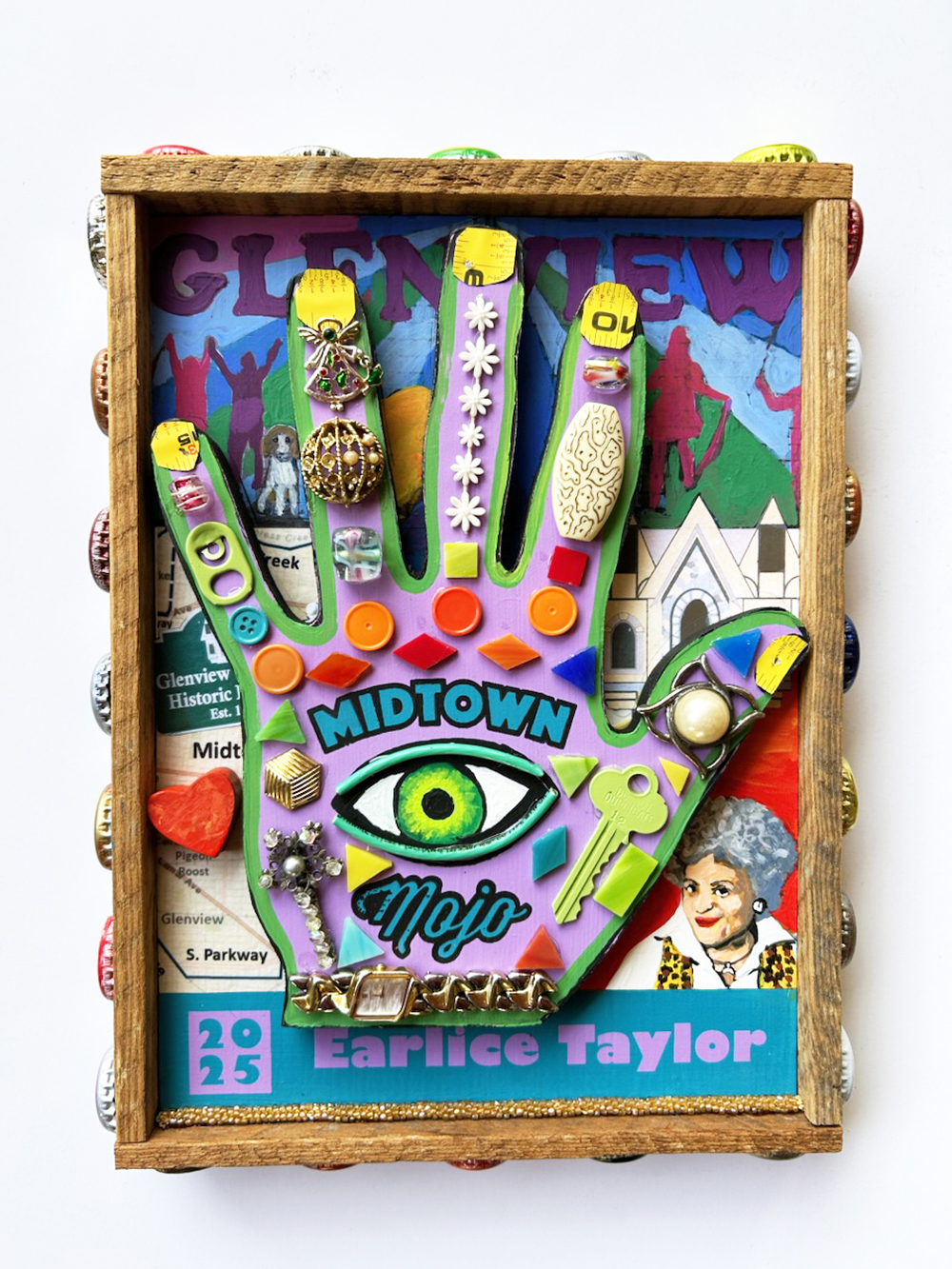Among this year’s Mojo of Midtown Award recipients, two individuals were honored for their outstanding contributions to the stability and revitalization of Midtown neighborhoods. Their efforts have been so transformative that their successes now feel like an inherent part of the community, as if Midtown has always been a collection of thriving neighborhoods. However, when Hershel Lipow and Earlice Taylor received their honors at the Mojo of Midtown Awards Bash, hosted by MidtownMemphis.org on April 7, 2025, we were reminded that the Midtown we know today was shaped by the dedication and vision of individuals who worked tirelessly for its betterment.
Earlice Taylor has long been a pillar of the Glenview neighborhood, where her unwavering commitment to preservation and community-building has earned her widespread recognition. Thanks to her efforts, Glenview has become both a national and local Landmarks District, ensuring its historical integrity while fostering homeownership and neighborhood pride. In a 2010 oral history program, Earlice described herself as a historic preservationist, a landmarks commissioner, and a singer — each role reflecting her deep commitment to safeguarding both the physical and cultural heritage of her community. A gifted communicator, she articulates a vision that inspires others to take action. She also founded the Tennessee Cultural Preservation Society, an organization dedicated to identifying, protecting, and celebrating African-American history and culture. While her ideas and ambitions have been far-reaching, she has always maintained a steadfast focus on the neighborhood just beyond her front door.

As the first administrator of Memphis Housing and Community Development (HCD) in 1975, Hershel Lipow played a pivotal role in shaping Midtown’s trajectory. Under his leadership, HCD developed a comprehensive program of public works, housing initiatives, and community services that laid the foundation for the vibrant neighborhoods we see today. His team of planners worked closely with Midtown residents, educating them on the benefits of organization and helping them form neighborhood associations — one of Midtown’s greatest assets today.
In the 1970s, Midtown neighborhoods faced significant decline. Recognizing the need for change, HCD staff studied existing land use and recommended “downzoning” — a shift from multiunit residences to single-family home zoning. This policy aimed to increase homeownership and instill a sense of pride in the community. Though such changes take time, the results were profound. Midtown neighborhoods became more desirable, experiencing a resurgence in stability and vibrancy. Inspired by the success of neighborhood organizations and improvement efforts led by HCD, many communities, including Annesdale Park, Annesdale-Snowden, Rozelle-Annesdale, and Cooper-Young, saw remarkable revitalization. These efforts spurred other Midtown neighborhoods to follow suit, embracing the model of strong neighborhood associations to drive their own improvements.
Hershel and his team also recognized the importance of preserving Midtown’s architectural and historical significance. Rather than treating Memphis as a blank slate, HCD encouraged historically significant Midtown neighborhoods to seek inclusion in the National Register of Historic Places. They provided residents with education and support to facilitate the application process, ensuring that Midtown’s development history remained an asset rather than an obstacle. To further safeguard Midtown’s historic character, Hershel and HCD established the Memphis Landmarks Commission (MLC), which introduced the review process for “Certificates of Appropriateness” in historic districts. By the 1980s, the MLC had initiated a program of locally adopted historic districts, many of which remain active participants in the Landmarks approval process today. Achieving Landmarks historic district status has not only become a source of pride for Midtown neighborhoods but also serves as a protective measure against the indiscriminate destruction of their character and charm.
A recent Smart City article by Tom Jones highlighted the complexities of urban population loss, noting that “if there is a main lesson to be gleaned from other cities, it is that there is no one-size-fits-all solution. Rather, solutions that work for each city must be organic and appropriate to its distinctive trends and conditions.” This insight aligns closely with the philosophy of Memphis Housing and Community Development under Hershel Lipow’s leadership. Rather than imposing rigid policies, HCD sought to understand and amplify the unique strengths of Memphis neighborhoods, empowering them to shape their own futures.
Earlice Taylor embodied this same spirit of local leadership, fighting tirelessly to preserve and protect Glenview. Her dedication was recognized in November 2000, when the Commercial Appeal reported on Glenview’s groundbreaking achievement: “A measure creating the city’s first predominately Black local historic district won City Council approval without opposition.”
The achievements of Hershel Lipow and Earlice Taylor exemplify the essence of what the Mojo of Midtown Awards seek to celebrate. Their vision, persistence, and commitment to community empowerment have left an indelible mark on Midtown Memphis. As we honor them, we acknowledge not only their past successes but also the lasting impact of their work — an impact that continues to shape and inspire our city today.
Emily Bishop is a native Memphian and a Midtowner by choice.
She currently serves as the president of MidtownMemphis.org.
